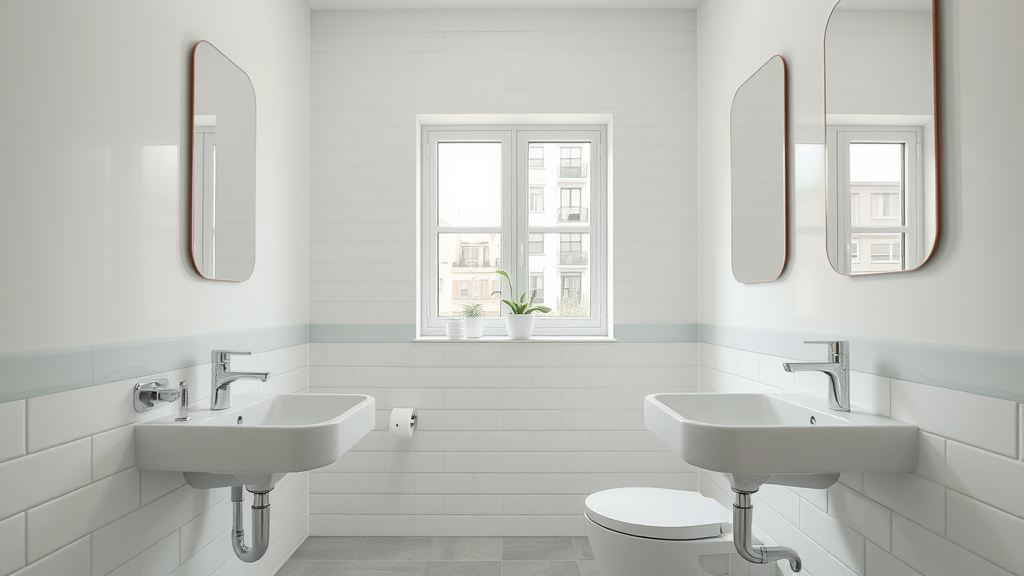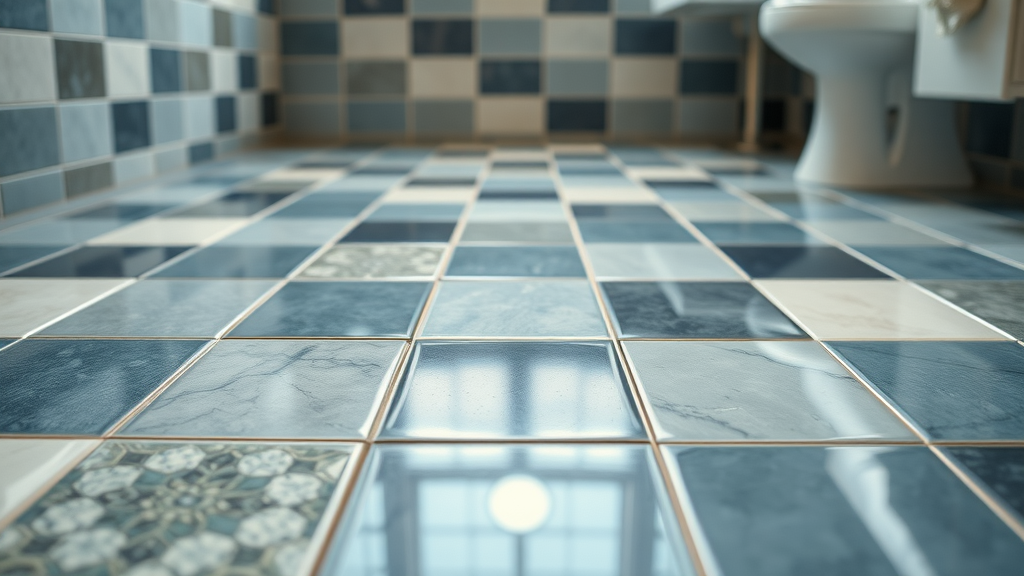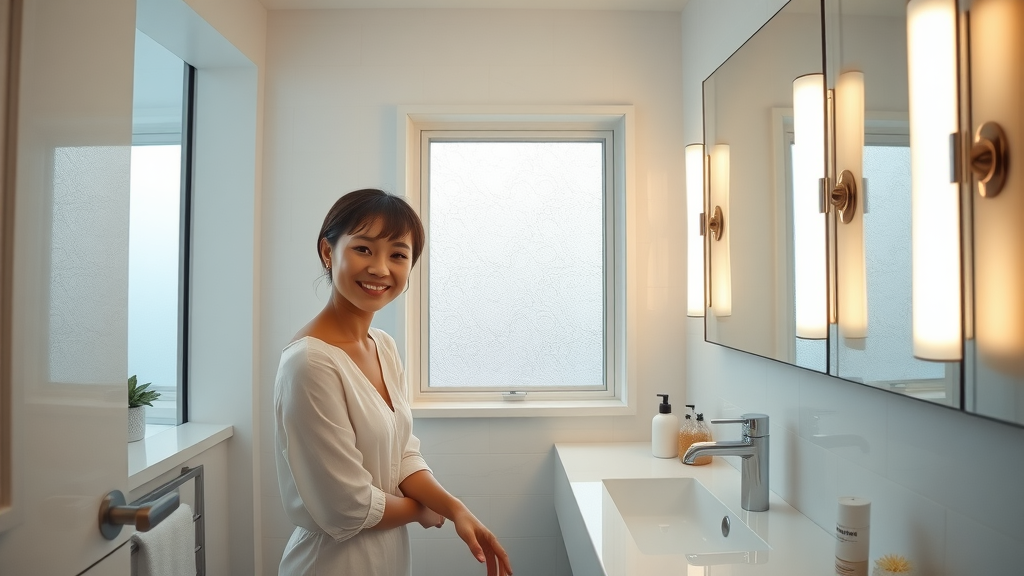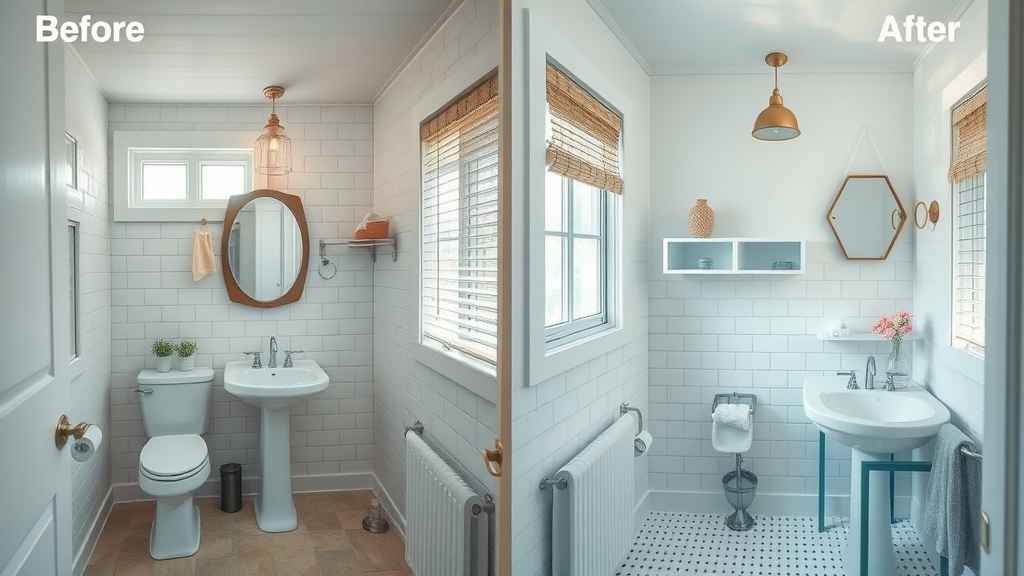Have you ever wondered if your small bathroom could actually feel bigger—without knocking down a single wall or breaking the bank? Discover how a few smart small bathroom remodeling tips can transform even the tiniest bath into a stylish, airy oasis. Whether you’re dealing with an outdated guest bath, a compact en suite, or a powder room that needs personality, these expert strategies and small bathroom ideas will help you make every inch work harder for you.
Are You Making the Most of Your Small Bathroom? Small Bathroom Remodeling Tips for Any Space
Most homeowners accept the myth that a small bathroom must be cramped, cluttered, and limiting. In reality, using strategic small bathroom remodeling tips can totally refresh your space to be functional, comfortable, and even luxurious. From layout to lighting, every choice impacts the room feel and usability of your small bath. By applying space-saving fixtures, clever color selections, and optimized storage, you can create a bathroom that feels larger, brighter, and incredibly unique.
Understanding the specific constraints of a small bathroom is crucial before you begin your bathroom remodel. For one, square footage dictates your approach to floor tile, storage space, and the types of fixtures you can include. But with a thoughtful bathroom renovation plan, you can introduce features like a glass shower door to open up sightlines or install a sleek pedestal sink to reclaim precious floor space. Each of these small bathroom remodeling tips is designed to help your bathroom reno punch above its weight and deliver a spa-like feel in even the tightest quarters.
What You’ll Learn From These Small Bathroom Remodeling Tips:
Proven ways to maximize every inch of your small bath
Space-saving and stylish bathroom reno ideas
Floor tile tips and layout tricks for tiny bathrooms
Strategies for efficient bathroom remodeling
Answers to common budget and renovation questions

Practical Small Bathroom Remodeling Tips: Achieve Big Results in Small Baths
Smart Strategies for Small Bathrooms: Layout and Design Insights
When tackling a small bathroom remodel , the first step is to assess your current space for both flow and function. Are there obstacles, awkward corners, or oversized fixtures that eat up valuable room? Prioritize optimizing the traffic path. For example, swapping out a swinging door for a sliding one or using a compact toilet can drastically improve your small bath’s usability.
Reflective surfaces—think glossy subway tile, large mirrors, and glass shower doors—bounce natural light around, helping a confined room feel brighter and bigger. Choose light paint colors such as classic white, powder blue, or soft gray, as they can create the sensation of a much larger environment. Avoid bulky vanities and opt for streamlined designs; a wall-mounted sink or pedestal sink can keep your floors visible, instantly allowing the space to feel larger and more open.
Assess your current small bath layout for functionality
Optimize traffic flow in a small bathroom remodel
Use reflective surfaces and light paint to open up the space
Avoid bulky vanities in your bathroom renovation

Maximize Your Small Space: Smart Solutions and Creative Ideas
To maximize a small space, every choice—the placement of a towel rack, the scale of floor tile, or the shape of a shower door—should be intentional. One creative approach is to use a vertical design strategy: extend shelving and cabinets upward, making use of often-overlooked airspace above the toilet or door frame. Consider floating shelves or built-in cubbies in the shower wall for storing toilet paper, toiletries, and other essentials.
Another brilliant small bathroom idea involves multifunctional fixtures. For instance, mirror cabinets double as both storage and spatial enhancers. If you don’t need a big tub, installing a walk-in shower with clear glass partitions can keep lines sight and visually expand the room feel. Emphasize horizontal lines—using tile or banded paint—to draw the eye across the perimeter of the small bathroom, making the space feel broader.
Innovative Storage Solutions for Small Bathrooms
Creating efficient storage space is essential for any tiny bathroom. Built-in shelving offers a seamless, integrated look and is perfect for a small bath or powder room. Open shelves above or beside your vanity keep daily essentials within easy reach and are ideal for showing off attractive containers or plants. Weigh the pros and cons of a pedestal sink versus a traditional vanity: while vanities provide more enclosed storage, a pedestal sink frees up visual floor space, making your bathroom feel less crowded.
Over-the-toilet storage is another lifesaver in small bathrooms. Look for tall, slim units or install floating shelves to keep towels and toilet paper off the floor and away from splash zones. Professional bathroom remodelers often use tricks like wall-mounted baskets, corner shelves, or recessed shower niches to squeeze extra storage from unlikely places. The goal is to reduce clutter and open up your bathroom’s layout, giving you a spa-inspired and organized atmosphere.
Built-in shelving for small bath and powder room
Pedestal sink vs. vanity: best options for small bathrooms
Over-the-toilet storage and floating shelves
Storage tricks from expert bathroom remodelers
Choosing the Best Floor Tile for Small Bathroom Remodeling
Floor tile can transform both the look and feel of your small bathroom. Select tile size and pattern carefully: large-format tiles with minimal grout lines provide a seamless appearance, making the room feel more expansive than it is. Alternatively, a classic white subway tile set in a horizontal or herringbone pattern can visually elongate the space. For those seeking personality, mosaic tiles offer endless creativity with custom shapes and colors, while maintaining scale in a tiny bath.
Safety and durability are also top priorities. Choose slip-resistant, waterproof tiles for the shower floor or the main area. Porcelain and ceramic are popular for their resistance to moisture and ease of cleaning—a must for busy family bathrooms, primary baths, or powder rooms. When done thoughtfully, new floor tile creates an inviting, updated look that stands the test of time and adds value to your bathroom renovation.
Selecting scale and pattern for floor tile
How subway tile can create the illusion of more space
Slip-resistant and waterproof tile options
Space-Saving Floor Tile Options for Small Bath | |||
Tile Type |
Appearance Benefit |
Maintenance |
Slip Resistance |
|---|---|---|---|
Subway Tile |
Elongates small bathrooms |
Easy |
Moderate |
Mosaic Tile |
Customizable, unique patterns |
Moderate |
High |
Large-Format Tile |
Fewer grout lines, seamless |
Easy |
Moderate |

Showers, Doors, and Curtains: Small Bathroom Renovation Choices
Choosing between a shower curtain and a frameless glass shower door is a pivotal decision in a small bathroom remodel. Frameless doors invite more natural light, help a compact shower floor blend seamlessly with the rest of the bath, and eliminate visual boundaries—making the entire room feel bigger. However, a stylish shower curtain can soften the look and introduce pattern or color, all while keeping splash zones contained.
Consider walk-in shower concepts if you’re ready to ditch the traditional tub. These can be especially effective in tiny bathrooms, primary baths, or guest baths where accessibility, aesthetics, and ease of cleaning are top concerns. Remember, though, that glass doors require consistent maintenance to keep them crystal clear, while curtains are easy to replace and can be thrown in the wash. Factor in your storage needs, cleaning habits, and, of course, your design style.
Frameless shower door vs. shower curtain for small bathrooms
Walk-in shower concepts for tiny spaces
Pros and cons of glass doors in bathroom remodeling
Small Bathroom Ideas That Transform Limited Space
Lighting Tips for Small Bathroom Remodels
Bright, well-planned lighting can make a world of difference in a small bathroom remodel. Maximize natural light by keeping window treatments minimal—frosted glass or top-down shades provide privacy while letting in the sun. Complement this with layered artificial lighting, such as a combination of overhead recessed lights and bright vanity fixtures, to evenly illuminate the whole space.
Mirrors are your secret weapon. A large mirror (or a bank of smaller ones) above the bathroom vanity not only doubles as décor but also amplifies both natural and artificial light. Consider installing mirror cabinets to combine form and function, or experiment with backlit panels for a high-end touch. Expert interior design often revolves around making every corner of your small bathroom sparkle, so don’t skimp on this critical detail.
Maximizing natural light in a small bath
Best lighting fixtures for bathroom reno
Mirrors as both décor and spatial enhancers

Discover Stylish Bathroom Vanity Ideas for a Stunning Remodel
The right bathroom vanity can serve as a stunning centerpiece in your small bathroom ideas plan. Space-saving floating vanities free up floor area and help the room feel lighter, while narrow-profile cabinetry keeps essentials hidden without sacrificing much valuable real estate. Opt for finishes that reflect light—think glossy paint or chrome hardware—to brighten the room further.
Choose your storage options thoughtfully. Open shelving beneath a vanity is perfect for stacking towels or baskets, while soft-closing drawers keep toiletries organized and within reach. Mirrors above the vanity, framed or frameless, can act as dynamic accent pieces and expand the visual boundaries of your small bath.
Color and Décor: Tricks for Visual Spaciousness in Small Bathrooms
Color and décor choices wield incredible power when it comes to making a small bathroom feel larger. Stick to a light, cohesive palette—classic white, cool neutrals, or pastels are tried and true for a reason. Paint the ceiling the same color as the walls, or use a shade just slightly lighter, which erases harsh boundaries and enhances the sense of height and openness.
Embrace minimalism in both accessories and wall art. A few well-chosen pieces (like a framed print or a small shelf with succulents) can personalize your space without cluttering it. Don’t overlook the fresh energy of greenery: even a single plant perched on a window ledge can soften lines and breathe life into your tiny bathroom. Style, simplicity, and function—balanced together—are the heart of superior bathroom remodeling .
Choosing the right paint for a small bathroom remodel
Minimalist décor and wall art placement
Incorporating greenery for a refreshing feel
“Clever design choices in a small bathroom remodel can give the illusion of space without compromising function.” – Leading Bathroom Designer
Step-By-Step Guide to Efficient Small Bathroom Remodeling
How to Plan Your Small Bathroom Renovation Project
Every great bathroom remodel starts with a clear plan. Begin by establishing your priorities: Is improved storage essential? Are you craving a more modern shower or better lighting over the bathroom vanity? The more specific you are about pain points and goals, the better your bathroom remodeling outcome will be. Take accurate measurements and create a detailed floor plan. Use online tools or graph paper to experiment with different layouts, ensuring every inch is accounted for.
Establishing a realistic timeline and budget is the backbone of any successful bathroom renovation . Assign phases to your project—design, demolition, plumbing, installation, finishes—and try to anticipate potential construction delays. Prioritize investments: splurge on long-lasting fixtures and tile while being thrifty with accessories or décor. With careful planning, even a small bathroom can be a satisfying, budget-friendly project.
Maximize Your Storage Space: Smart Solutions for Efficient Organization
Setting priorities for your bathroom remodeling
Measuring and creating an efficient floor plan
Timeline and budgeting tips for a small bathroom remodel
Clever organization is the secret to a clutter-free, functional small bathroom. Identify underutilized zones—above the door, inside vanity cabinets, behind mirrors—and install strategic storage solutions. Invest in streamlined baskets, dividers, and multi-purpose containers to keep toiletries and cleaning supplies neatly arranged. Revisit the use of floating shelves and built-in storage wherever possible, and don’t be afraid to edit down unnecessary items. A streamlined space not only feels bigger, but also makes daily routines more enjoyable and efficient.
Executing the Remodel: Key Phases of a Successful Bathroom Reno
Demolition tips for small bathrooms
Plumbing and electrical considerations in a bathroom renovation
Finishing touches to elevate your small bath
When you're ready to break ground, start with demolition—remove fixtures, tile, and cabinetry in a careful sequence to protect surrounding rooms. Next, address plumbing and electrical requirements, especially if you’re moving major elements or upgrading to energy-efficient lighting and water-saving fixtures. Always work with licensed pros for system upgrades to ensure your bathroom remodel is up to code and safe.
Installing floor and wall tiles follows rough-ins, and then come your selected fixtures: vanity, toilet, shower or tub. The final phase includes painting, lighting, mirrors, and adding those designer finishing touches. Even in a tiny bath, investing time in careful setup and cleanup ensures a result you’ll enjoy for years to come.
People Also Ask: Your Pressing Questions About Small Bathroom Remodeling Answered
What is a good budget for a small bathroom remodel?
A reasonable budget for a small bathroom remodel typically ranges from $5,000 to $15,000 depending on material choices, labor costs, and the scope of your bathroom renovation. Prioritize layout changes and critical updates to make the most of your investment.
What is the hardest part of a bathroom remodel?
The hardest part of a bathroom remodel is often updating plumbing and electrical components, especially in older small bathrooms. Space constraints can make demolition and installation challenging, so professional support is advisable.
In what order should you renovate a bathroom?
The general order for a bathroom remodel is: 1) Demolition, 2) Plumbing/Electrical rough-ins, 3) Floor and wall tiling, 4) Fixtures installation, and 5) Finishing details, such as paint and lighting.
Can you renovate a bathroom for $5000?
Yes—a basic small bathroom renovation can be achieved for $5,000 by focusing on updates like new fixtures, a fresh coat of paint, affordable tile, and DIY labor. Be realistic about limitations and prioritize safety and waterproofing.
Frequently Asked Questions: Small Bathroom Remodeling Tips
What are quick fixes for making a small bathroom appear larger?
How do you choose the right shower door or curtain for tiny spaces?
What materials are best for durability in small bathrooms?
Is it worth hiring a designer for a small bath renovation?

Five Key Small Bathroom Remodeling Tips to Remember
Plan your bathroom remodel for both function and style
Use vertical and hidden storage to save space in small bathrooms
Choose light colors and reflective surfaces
Select the right floor tile and shower options
Don’t overlook lighting and small details in a bathroom reno
Unlock Your Dream Small Bathroom With These Remodeling Tips
"Maximizing every inch in your small bathroom is possible with the right remodeling tips—start your journey today!"
Conclusion: Start by planning function and style, embrace light and smart storage, and focus on details—these small bathroom remodeling tips are your keys to unlocking a space that feels as good as it looks. Ready to create your dream bath?
To further enhance your small bathroom remodeling project, consider exploring these expert resources:
 Add Row
Add Row  Add
Add 




Write A Comment